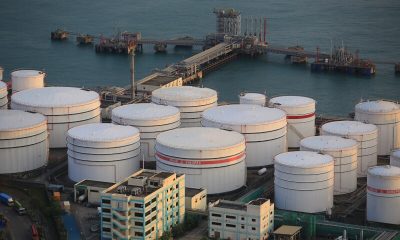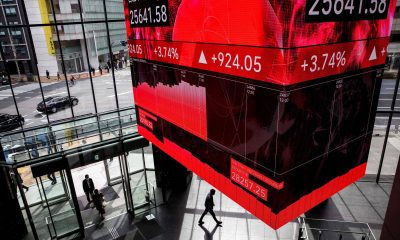Commodities
Oil prices rise after U.S. debt deal, all eyes on OPEC meeting
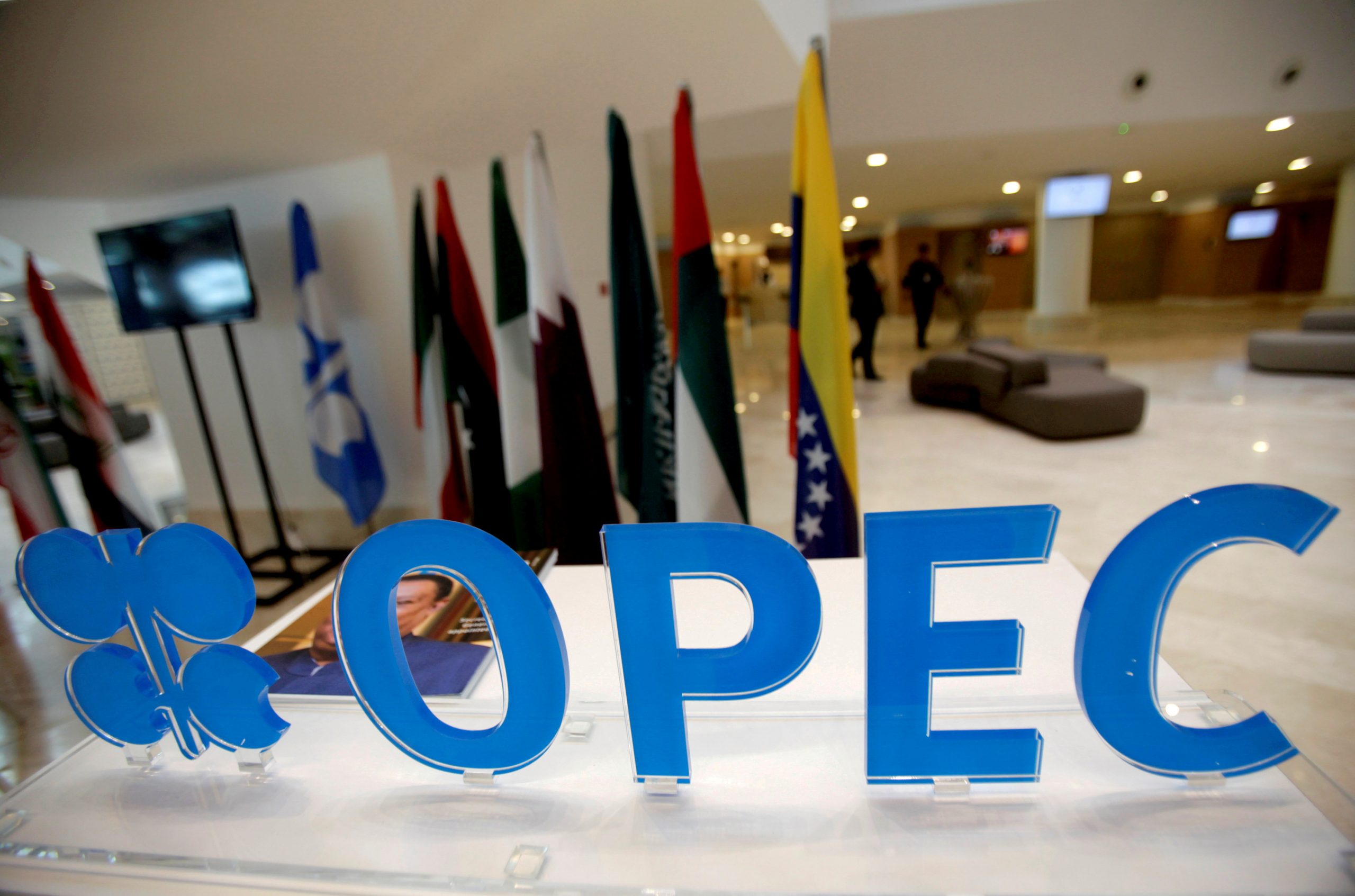
Oil prices rose on Friday after a U.S. debt ceiling deal averted a default in the world’s biggest oil consumer, while attention turned to a meeting of OPEC ministers and their allies at the weekend.
Brent crude futures rose 77 cents, or 1% to $75.05 a barrel by 0806 GMT, while U.S. West Texas Intermediate crude (WTI) was up 69 cents, or 1%, at $70.79. Both contracts were headed for their first weekly loss in three weeks.
Markets were reassured by a bipartisan deal to suspend the limit on the U.S. government’s $31.4 billion debt ceiling, which staved off a sovereign default that would have rocked global financial markets.
Earlier signals of a potential pause in rate hikes by the Federal Reserve also provided support to oil prices, not least by weighing on the U.S. dollar, making oil cheaper for holders of other currencies.
Investor attention is now fixed on the June 4 meeting of the Organization of the Petroleum Exporting Countries and allies including Russia, collectively called OPEC+.
OPEC+ in April announced a surprise cut of 1.16 million barrels per day in April, but the gains from that move have since been retraced and prices are below pre-cut levels.
But signals on any fresh cut have been varied, with Reuters reporting and bank analysts indicating that further output cuts are unlikely.
On the demand side, the U.S. Institute for Supply Management (ISM) said its manufacturing PMI fell to 46.9 last month, the seventh-straight month that the PMI stayed below 50, indicating a contraction in activity.
Manufacturing data out of China painted a mixed picture. Thursday’s better-than-expected Caixin/S&P Global China manufacturing PMI contrasted with the previous day’s official government data that reported factory activity in May had contracted to the lowest level in five months.
Commodities
Goldman lifts its gold year-end forecast; “unshakeable bull market”
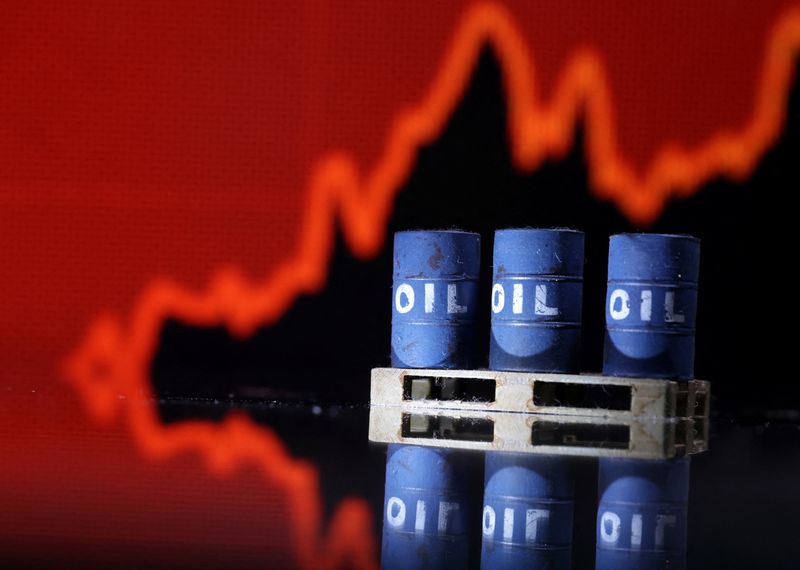
Investing.com – Goldman Sachs has lifted its year-end price target on gold, saying the yellow metal is currently in “an unshakeable bull market.”
hit a record high of $2,372.62 an ounce over the weekend, while June climbed to a record high of $2,389.0 an ounce.
The biggest point of support for gold prices of late was a drone and missile strike by Iran against Israel over the weekend, in supposed retaliation for an attack on an Iranian embassy in Syria.
The move marked the potential entry of Iran into the long-running Israel-Hamas war, and presented the possibility of a greater conflict in the Middle East, which could also draw in the United States.
However, gold had already posted strong gains this year, even with sticky inflation suggesting Fed interest rates remained elevated for longer than previously expected.
“Indeed, despite the market pricing progressively fewer Fed cuts, stronger growth trends and record equity markets, gold has rallied 20% over the past two months,” analysts at the investment bank said, in a note dated April 12.
“The traditional fair value of gold would connect the usual catalysts – real rates, growth expectations and the dollar – to flows and the price. None of those traditional factors adequately explain the velocity and scale of the gold price move so far this year.”
Goldman said the majority of the gold upside since mid-2022 has been driven by new incremental (physical) factors, not least a significant acceleration in EM Central Bank accumulation as well as Asian retail buying.
“Those factors remain well affirmed by current macro policy and geopolitics. Moreover, with Fed cuts still a likely catalyst to soften the ETF headwind later in the year, and right tail risk from the US election cycle and fiscal setting, gold’s bullish skew remains clear,” Goldman said.
The bank has upgraded our price forecast to $2,700 a troy ounce by year-end, up from $2,300 a troy ounce previously.
Commodities
Russia and China trade new copper disguised as scrap to skirt taxes, sanctions
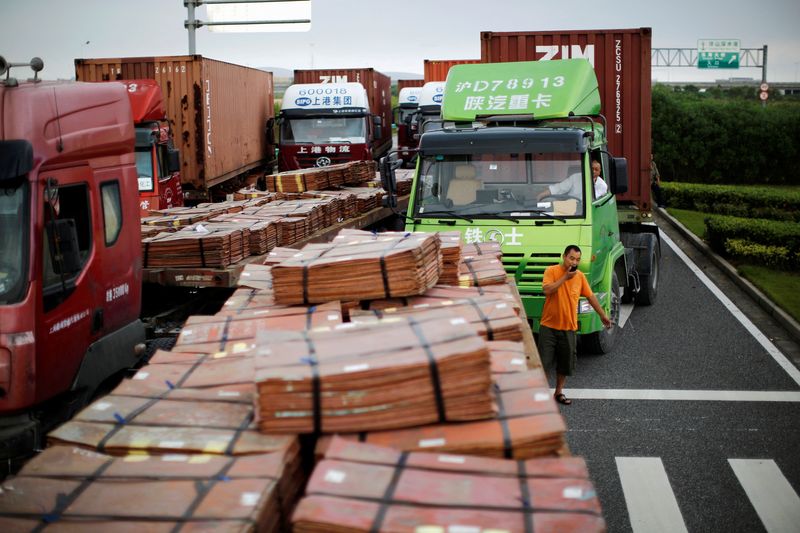
(Reuters) – Russian Copper Company (RCC) and Chinese firms have avoided taxes and skirted the impact of Western sanctions by trading in new wire rod disguised as scrap, three sources familiar with the matter told Reuters.
Copper wire rod was shredded in the remote Xinjiang Uyghur region by an intermediary to make it hard to distinguish from scrap, the sources said, allowing both exporters and importers to profit from differences in tariffs applied to scrap and new metal, the sources said.
Russia’s export duty on copper rod was 7% in December, lower than the 10% levy on scrap. Imports of copper rod into China are taxed at 4%, and there is no duty on Russian scrap imports.
The sales of new metal disguised as scrap, which started in December, are reflected in a discrepancy between Chinese and Russian data.
Chinese customs data showed China has bought significantly more copper scrap from Russia since December, while Russian figures Reuters obtained from a commercial data provider showed the amount of scrap exported to the country’s biggest trade partner was negligible.
In response to a Reuters’ inquiry on the discrepancy, Russian customs said: “The Federal customs service temporarily does not provide data on foreign trade.” It stopped publishing trade data in April 2022 shortly after Russia’s invasion of Ukraine. Since then, the market has relied on commercial providers.
Asked about the trade in copper rod to Chinese firms, RCC, which is subject to Western sanctions, said that it supplies products only to Russian companies. It did not comment further.
China’s customs in Xinjiang, which borders Russia, did not respond to an emailed inquiry and a telephone call.
China has become a major destination for Russian companies seeking to export their commodities after the United States imposed sanctions on Russia for its invasion of Ukraine in February 2022.
The United States and the European Union have imposed sanctions on Chinese companies for supporting Russia’s war effort in Ukraine.
DISGUISE
Shredding newly-made copper wire rod is an effective way to disguise new material that looks very different to scrap.
The new, high-purity copper long, thin rods, mainly used for making power cables, are typically coiled for ease of transport.
Copper scrap, by contrast, is a mix of wires, tubes and pipes that have already been used. They are chopped into grain-sized pieces or coiled and pressed, like packs of noodles, for transport.
The shredding had escaped notice as China has restricted access to the Xinjiang region in response to international condemnation of Uyghur repression, the sources said.
Apart from the financial incentive of avoiding taxes, the shredded metal is harder to identify and trace – making it easier to sell to Chinese manufacturers.
Theoretically, there are no legal obstacles to prevent China from buying metal from Russian firms under Western sanctions, but manufacturers may still be wary of losing export business to buyers seeking to avoid providing any funds to Russia.
Sanctions can also mean difficulties with processing payments and borrowing money. The sources said some Chinese companies have set up new teams to deal with Russian-related business.
‘DE FACTO COPPER ROD’
Last December, according to a commercial data provider Chinese companies made a total of five purchases of products labelled as “copper rod” from RCC’s plant in the Urals region. The purchases made by a United Arab Emirates-based entity called Modern Commodity Trading DMCC, generated revenues of roughly $65 million, according to the commercial data provider.
The UAE-based firm could not be reached for comment.
Russia has never been a major seller of scrap copper to China.
However, from December last year, China’s copper scrap imports from Russia rose significantly, customs data showed.
Most of that, 97% or 6,434 metric tons, came through the Alashankou border of Xinjiang in December.
Russian data showed a mismatch, indicating the country sold only 73 tons of copper scrap to China in the same month.
In 2021 and 2022, an average of 95.3 tons and 125 tons of Russian copper scrap were sold to China each month.
Volumes rose sharply over the last few months with monthly imports reaching 11,599 tons by February 2024.
Customs data on Chinese imports of copper wire rod is not publicly available.
“This scrap from Russia is de facto copper rod, but not declared as rod. I cannot disclose any more detail,” said a Chinese manufacturing source who asked to remain anonymous. The source added the material could be directly consumed by copper fabricators in Jiangsu and Zhejiang provinces.
While Russian data showed minimal scrap exports, a sudden increase in wire rod exports occurred in December.
According to the data, “Kyshtym Copper Electrolyte Plant JSC,” a plant run by RCC delivered 8,041 tons of copper wire rod to China via Alashankou in Xinjiang in December compared with only 1,618 tons in November.
“As of today, Kyshtym Copper Electrolyte Plant sells its products only to domestic companies,” the Kyshtym plant said in a response to Reuters questions on its sales to China.
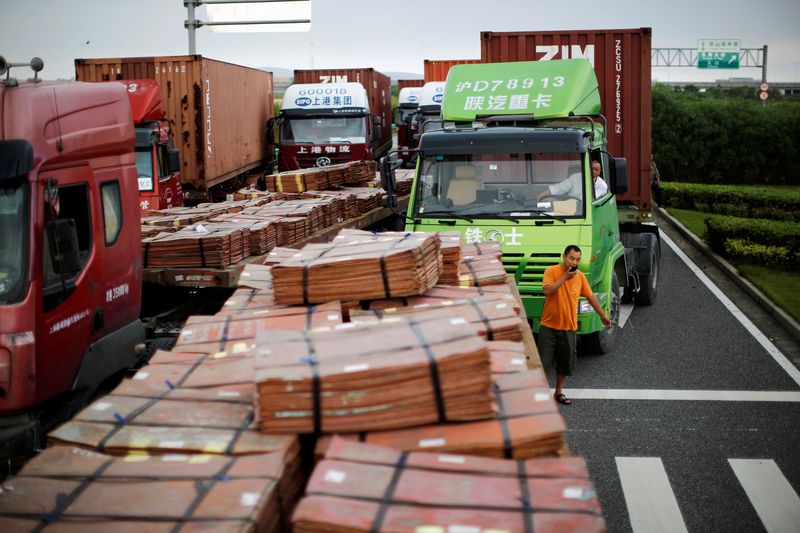
“We have not monitored the products’ further fate, so I have nothing to add to what has already been said.”
(This story has been refiled to fix the spelling to ‘Uyghur’ from ‘Uygur’, in paragraphs 2 and 14)
Commodities
Gold prices rise, record highs in sight amid Iran-Israel fears
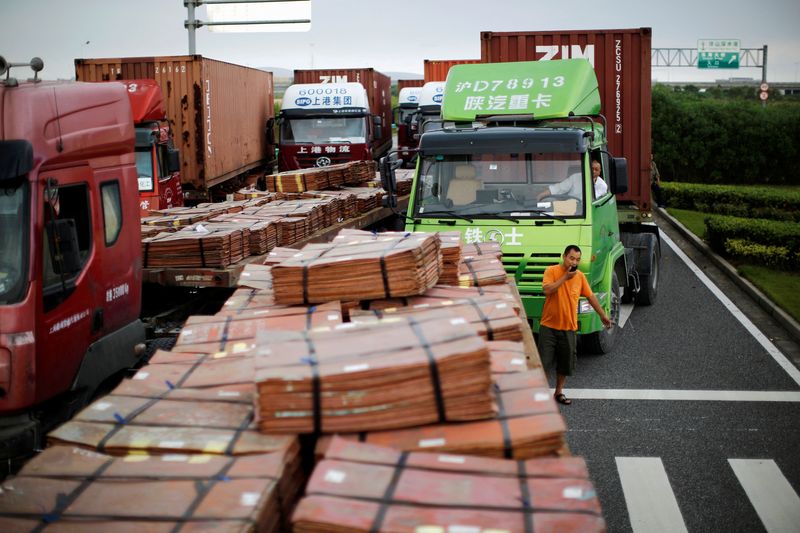
Investing.com– Gold prices rose in Asian trade on Monday and were in sight of record highs as demand for safe havens was boosted by Iran’s attack on Israel, although strength in the dollar limited major gains in the yellow metal.
Markets were also waiting to see just how Israel would respond to Iran’s strike, given that the attack caused limited damage, and that Tehran also said the move concluded its offensive against Israel. This helped limit some safe haven demand.
rose 0.6% to $2,357.81 an ounce after hitting a record high of $2,372.62 an ounce over the weekend, while steadied at $2,373.0 an ounce after hitting a record high of $2,389.0 an ounce.
Safe haven demand underpins gold prices
The biggest point of support for gold prices was a drone and missile strike by Iran against Israel over the weekend, in supposed retaliation for an attack on an Iranian embassy in Syria.
The move marked the potential entry of Iran into the long-running Israel-Hamas war, and presented the possibility of a greater conflict in the Middle East, which could also draw in the U.S..
But the Iranian strike appeared to have caused limited damage in Israel. Israeli ministers also reportedly said that they had no plans to immediately retaliate over the attack.
The U.S. also appeared to be making attempts to deescalate the situation, stating that it will not engage in any retaliatory action against Iran.
This notion, coupled with recent strength in the , put a cap on greater gains in gold. The yellow metal’s outlook was also somewhat muddied by the prospect of higher-for-longer U.S. interest rates, following hotter-than-expected inflation readings last week.
Other precious metals retreated on Monday. fell 0.7% to $985.05 an ounce, while fell 0.3% to $28.258 an ounce.
Copper prices mixed after weak China data, aluminum rallies
Among industrial metals, copper prices were a mixed bag on Monday amid pressure from a stronger dollar, as well as weak economic signals from top importer China.
on the London Metal Exchange rose 0.4% to $9,457.0 a ton, while fell 0.6% to $4.2888 a pound.
Both contracts remained close to 15-month highs, on expectations of tighter supplies as several major Chinese refiners signaled supply cuts. Russian copper exports were also slapped with new sanctions by the U.S. and UK.
But this optimism was somewhat dulled by weak inflation and trade readings from China last week, which showed that economic growth in the world’s biggest copper importer remained weak.
Meanwhile, aluminum prices rallied on Monday on the prospect of tighter supplies, as the U.S. and UK placed new sanctions on Russia over its invasion of Ukraine.
on the London Metal Exchange surged nearly 5% to $2,605.0 a ton.

 Forex2 years ago
Forex2 years agoForex Today: the dollar is gaining strength amid gloomy sentiment at the start of the Fed’s week

 Forex1 year ago
Forex1 year agoUnbiased review of Pocket Option broker

 Forex2 years ago
Forex2 years agoHow is the Australian dollar doing today?

 Forex2 years ago
Forex2 years agoDollar to pound sterling exchange rate today: Pound plummeted to its lowest since 1985

 Cryptocurrency2 years ago
Cryptocurrency2 years agoWhat happened in the crypto market – current events today

 World1 year ago
World1 year agoWhy are modern video games an art form?

 Stock Markets2 years ago
Stock Markets2 years agoMorgan Stanley: bear market rally to continue

 Economy2 years ago
Economy2 years agoCrude oil tankers double in price due to EU anti-Russian sanctions





